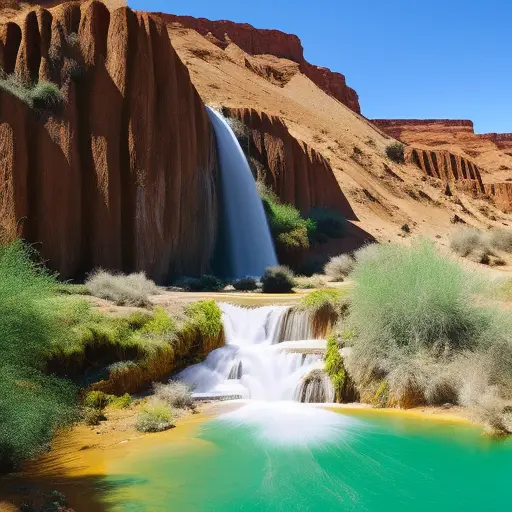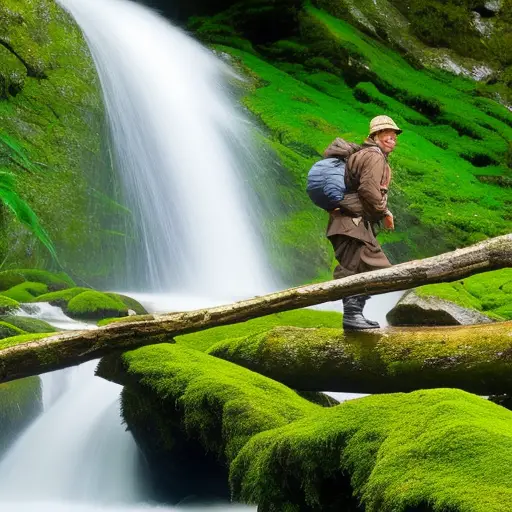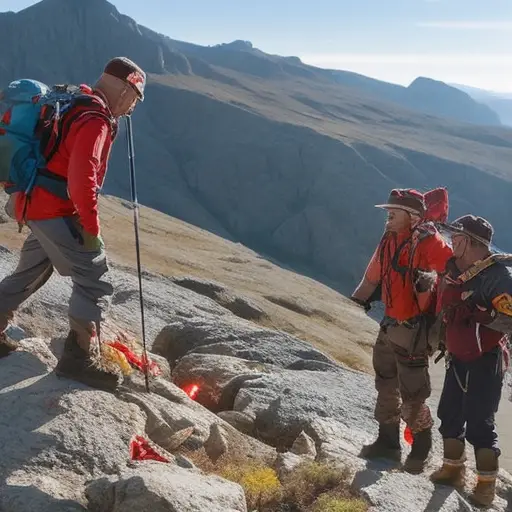Building a Long-Term Wilderness Camp

In a world that is becoming increasingly interconnected and reliant on technology, there is a growing longing for a return to nature, to disconnect and find solace in the wilderness.
Building a long-term wilderness camp allows individuals to immerse themselves in the beauty and tranquility of nature while still maintaining a sense of comfort and security.
In this article, we will explore the essential steps and considerations involved in creating a sustainable and practical wilderness camp, ensuring a truly transformative experience.
Selecting the Perfect Wilderness Location
One key factor in building a long-term wilderness camp is selecting the ideal location. Finding a suitable wildlife location is crucial for a successful wilderness camp. This involves conducting thorough research to identify areas that are rich in biodiversity and offer ample opportunities for outdoor activities such as hiking, fishing, and wildlife observation. It is essential to choose a location that is home to a diverse range of plant and animal species, as this will provide campers with a unique and immersive experience in nature.
However, it is not enough to simply find a location with abundant wildlife. Understanding local regulations is equally important. Before establishing a wilderness camp, it is crucial to familiarize oneself with the specific regulations and permits required for operating in the chosen area. This may include obtaining permits for hunting or fishing, adhering to camping restrictions, and respecting any protected areas or endangered species that may be present.
Designing Your Campsite Layout
When designing your campsite layout for a long-term wilderness camp, it is essential to carefully consider the needs of campers and the natural environment in order to create a functional and sustainable space.
Here are some key factors to keep in mind:
-
Campfire Location: Choose a central location for the campfire that provides warmth and acts as a gathering point for campers. Ensure it is a safe distance from tents and other flammable materials.
-
Outdoor Activities: Plan designated areas for different outdoor activities such as cooking, dining, and recreational pursuits. This will help maximize space and create a sense of organization within the campsite.
-
Tent Placement: Allocate ample space between tents to provide privacy and comfort for campers. Consider the natural topography and features of the land when determining the best locations for tents.
-
Water Source: Locate your campsite near a reliable water source for cooking, cleaning, and drinking. This will minimize the need to travel long distances and ensure a convenient water supply throughout the camp.
-
Sanitation Facilities: Set up designated areas for waste disposal, including trash bins and composting toilets. Proper waste management is crucial to maintain cleanliness and preserve the natural environment.
By carefully considering these factors, you can create a campsite layout that promotes functionality, sustainability, and an enjoyable camping experience.
With the campsite layout in place, the next step is to construct basic shelter and sleeping areas.
Constructing Basic Shelter and Sleeping Areas
To ensure long-term comfort and protection, constructing sturdy and well-insulated shelters and sleeping areas is crucial for a wilderness camp. Building fire pits and gathering building materials are essential steps in this process.
When constructing shelters, it is important to choose a location that is flat and free from any potential hazards like falling trees or flooding areas. The materials needed can vary depending on the environment, but commonly used ones include logs, branches, leaves, and tarpaulins. Building materials can be found within the campsite or nearby areas, reducing the need for long journeys.
To further enhance the comfort and insulation of the shelters, it is advisable to line the walls and floors with additional materials such as moss, grass, or even animal fur. This will help to keep the interior warm and dry during colder months.
In addition to shelters, providing comfortable sleeping areas is equally important. A simple yet effective solution is to construct elevated platforms using logs or sturdy branches. These platforms can be lined with soft materials like leaves or pine needles, creating a comfortable sleeping surface.
By building fire pits near the shelters, campers can enjoy warmth and the ability to cook meals. Fire pits should be built in a safe location, away from any flammable objects and in compliance with local regulations.
In conclusion, constructing well-insulated shelters and comfortable sleeping areas is crucial for long-term wilderness camps. By gathering building materials and building fire pits, campers can ensure their comfort and protection throughout their stay.
Transitioning to the subsequent section, let’s now focus on building essential amenities for further comfort and convenience.
Building Essential Amenities for Comfort
Now that we have covered the basics of constructing shelter and sleeping areas, it’s time to focus on building essential amenities for comfort in a long-term wilderness camp.
These amenities include water sources and purification methods to ensure access to clean drinking water. Proper shelter and sleeping arrangements are also important to provide a comfortable and safe environment.
Additionally, it is important to establish cooking and food storage areas to meet the nutritional needs of camp residents.
Water Sources and Purification
Regularly ensuring access to clean water is crucial for the long-term comfort and survival of individuals residing in a wilderness camp. In such remote locations, it is important to establish reliable water sources and implement effective purification methods. Here are some practical ways to achieve this:
-
Rainwater collection: Set up a system to capture rainwater and store it in large tanks or barrels.
-
Natural filtration: Utilize natural materials such as sand, gravel, and charcoal to create a filtration system that removes impurities from collected water.
-
Boiling: Heat water to a rolling boil for at least one minute to kill any harmful bacteria or parasites.
-
Chemical purification: Use water purification tablets or drops that contain chemicals like chlorine or iodine to disinfect the water.
-
UV sterilization: Employ portable UV sterilization devices that use ultraviolet light to kill microorganisms in the water.
With reliable access to clean water, the next step is to ensure comfortable shelter and sleeping arrangements for the residents of the wilderness camp.
Shelter and Sleeping Arrangements
Establishing adequate shelter and sleeping arrangements is essential for creating comfortable living conditions in a long-term wilderness camp.
When it comes to sleeping arrangements, there are various options to consider. One popular choice is a sleeping bag, which provides insulation and comfort during colder nights. There are different types of sleeping bags available, such as mummy bags that offer a snug fit and are ideal for colder temperatures, or rectangular bags that provide more room to move around.
Additionally, campfire cooking techniques can enhance the camp experience. Cooking over an open fire can be a practical and enjoyable way to prepare meals. Whether using a grill grate, skewers, or a Dutch oven, mastering campfire cooking techniques can help create delicious and satisfying meals while enjoying the beauty of the wilderness.
Cooking and Food Storage
To further enhance the comfort and functionality of a long-term wilderness camp, it is crucial to address the essential amenities of cooking and food storage. Here are some key considerations for ensuring a well-equipped camp kitchen:
-
Cooking Techniques: Familiarize yourself with various cooking methods suitable for outdoor environments, such as open-fire cooking, Dutch oven cooking, and using portable stoves.
-
Food Preservation: Implement proper food preservation techniques like dehydrating, canning, and vacuum sealing to extend the shelf life of perishable items.
-
Cooking Utensils: Pack essential cooking utensils, including pots, pans, knives, cutting boards, and utensils, to facilitate meal preparation.
-
Food Storage Containers: Invest in durable, airtight containers to store food and prevent spoilage from moisture and pests.
-
Waste Disposal: Develop a waste management plan to dispose of food scraps and packaging responsibly to minimize environmental impact.
By addressing these aspects, you can create a well-equipped camp kitchen that ensures efficient meal preparation and enhances the overall camping experience.
Now, let’s move on to establishing a sustainable water and waste management system.
Establishing a Sustainable Water and Waste Management System
Implementing a comprehensive water and waste management system is essential for maintaining a sustainable and environmentally responsible long-term wilderness camp.
One of the key components of such a system is sustainable composting. By composting organic waste such as food scraps and yard trimmings, the camp can reduce its environmental impact and create nutrient-rich soil for gardening or landscaping purposes.
This can be achieved by setting up designated composting areas where organic waste is collected, mixed with carbon-rich materials like leaves or wood chips, and allowed to decompose naturally over time.
Another important aspect of the water and waste management system is rainwater harvesting. This involves collecting and storing rainwater for various uses within the camp, such as watering plants, cleaning, and even drinking water in some cases.
Rainwater can be collected from rooftops or other surfaces and directed into storage tanks or containers. It can then be purified or treated before use, ensuring a safe and sustainable water source for the camp.
In addition to sustainable composting and rainwater harvesting, other measures can be taken to minimize water waste and manage waste disposal effectively. This may include installing low-flow fixtures, implementing water-saving practices, and promoting recycling and proper waste segregation among camp residents and visitors.
Ensuring Safety and Security in the Wilderness
A crucial aspect of maintaining a long-term wilderness camp is ensuring the safety and security of camp residents and visitors. Being prepared for potential wildlife encounters and having emergency plans in place are essential components of a comprehensive safety and security strategy.
Here are some practical measures to consider:
-
Wildlife awareness and education: Provide camp residents and visitors with information about local wildlife species, their behavior, and how to safely coexist with them.
-
Proper waste management: Implement effective waste management systems to minimize attracting wildlife to the campsite.
-
Secure food storage: Encourage camp residents and visitors to store food securely to prevent attracting animals to their tents or sleeping areas.
-
Emergency preparedness: Develop and regularly review emergency response plans, including procedures for medical emergencies, natural disasters, and search and rescue operations.
-
Communication and navigation equipment: Ensure that camp residents and staff have reliable means of communication and navigation, such as satellite phones, radios, and maps, to facilitate quick response in emergencies.
By prioritizing wildlife awareness, waste management, emergency preparedness, and reliable communication, you can help create a safe and secure environment in your long-term wilderness camp.
Frequently Asked Questions
How Do I Obtain the Necessary Permits and Permissions to Build a Long-Term Wilderness Camp?
To obtain the necessary permits and permissions for a long-term wilderness camp, it is crucial to navigate through the complexities of wilderness regulations. Understanding the requirements and following the proper application process will ensure compliance and a successful camp establishment.
What Are Some Important Factors to Consider When Selecting the Perfect Wilderness Location for a Camp?
When selecting the perfect wilderness location for a camp, important factors to consider include wildlife management, ensuring a sustainable infrastructure, and creating an environment that balances the needs of campers with the preservation of the natural surroundings.
Are There Any Specific Regulations or Guidelines to Follow When Designing the Campsite Layout?
Campsite regulations and guidelines are crucial when designing a campsite layout. These regulations ensure safety, environmental sustainability, and adherence to local laws. Following guidelines can help create an organized and functional campsite, maximizing the experience for campers.
What Materials and Methods Are Commonly Used in Constructing Basic Shelter and Sleeping Areas in the Wilderness?
Sustainable construction in the wilderness relies on innovative building techniques. Basic shelter and sleeping areas commonly use natural materials such as wood, stone, and thatch, while methods like log cabin construction and earthbag building are popular choices.
How Can I Ensure the Safety and Security of Campers in the Wilderness, Especially in Remote Areas?
Ensuring the safety and security of campers in the wilderness, especially in remote areas, requires thorough preparation. This includes educating campers on wildlife encounters, implementing emergency communication protocols, and equipping them with necessary survival skills.
Conclusion
In conclusion, building a long-term wilderness camp requires careful consideration of location, campsite layout, shelter construction, and essential amenities.
It is crucial to establish a sustainable water and waste management system to minimize environmental impact.
Safety and security measures are also essential to protect campers in the wilderness.
By following these steps, you can create a camp that provides comfort and security while allowing you to fully immerse yourself in the beauty and serenity of nature.





